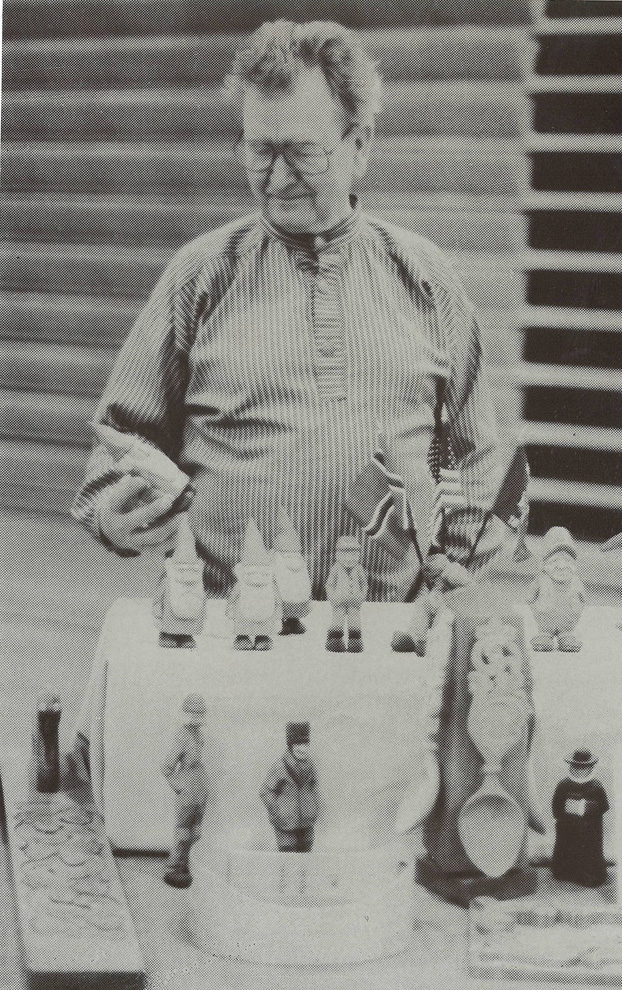Heritage Memorialized
47 Mangle Board (Mangletre) – Barsness
Mangle Board (Mangletre)
Norwegian-American
Edward Barsness, 1989
Wood (basswood)
Little Norway Collection, Gift of Raymond & Margaret Vicker Charitable Trust
MHAHS 2014.073.0027
While made for a woman’s practical role of ironing her family’s clothes, mangle boards were also deeply symbolic of love and marriage. In Norwegian tradition, a male suitor carved and placed a board on his love’s doorstep. If she shared his ardor, she brought the board inside and their courtship began. If she rejected his proposal, he would have to move on and carve a new board.
This mangle board was created for Little Norway by pastor-turned-woodworker, Edward Barsness of Black Earth, Wisconsin. In semi-retirement, Barsness studied woodworking at Vesterheim’s heritage center in Iowa and also in Norway. The elegant acanthus carvings seen on this piece are just one of the Norwegian motifs Barsness utilized in his creations.

Mangle boards are a useful work of art. They are not meant to tell a story, they are simply a decorative piece that can be used around the house. A mangle board is a carved, and sometimes painted piece of wood. Shapes, patterns, texture, line, composition, color, light, space, and so on are the components of the language, which the make of the mangle board strived for. Thus, when looking at a mangle board one must pay attention to detail throughout the board. A broad quality is universal; it could be seen in any medium, material, or object, regardless if it was made by a human or nature. Specific qualities, like the surface and texture, are unique to that one specific board. Boards were carved for women to use as a household object, and not a decoration.
The action of the woman accepting a home tool as an acceptance of a courtship shows the role of the woman in the home in society during the 16th through 18th centuries. Up until about 1840, when the feminist movement began in Norway, women were considered incapable of the traditionally male roles in society. Single women lived under the authority of their fathers until they were married, and then the authority transferred to the husband. Therefore, a woman accepting a mangle board from a suitor was accepting her new authority. This was the courtship custom in Norway. These mangle boards were carved for practical purpose, to be used around the house, and certainly not to be put on display in the home as a decorative piece.
Raymond, Jay. Mangle Boards of Northern Europe. p. 9
Ibid.


